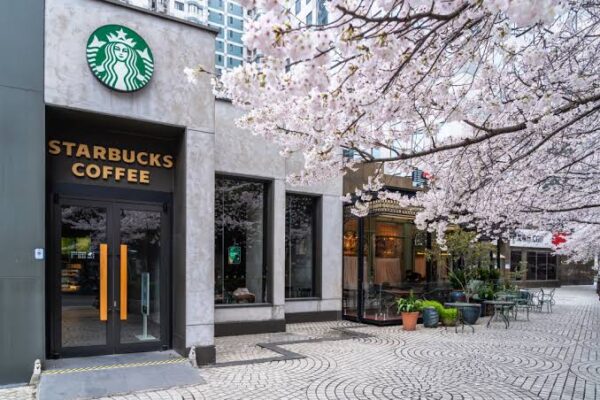 When people think of Starbucks� international expansion, they often associate it with the booming popularity of coffee culture in Europe or the bustling metropolises of China. However, the honor of being the first country outside of North America to welcome a Starbucks caf� belongs to Japan. In August 1996, the global coffee giant opened its first store in the Ginza district of Tokyo, marking a bold and symbolic step in Starbucks� mission to become a worldwide brand.
When people think of Starbucks� international expansion, they often associate it with the booming popularity of coffee culture in Europe or the bustling metropolises of China. However, the honor of being the first country outside of North America to welcome a Starbucks caf� belongs to Japan. In August 1996, the global coffee giant opened its first store in the Ginza district of Tokyo, marking a bold and symbolic step in Starbucks� mission to become a worldwide brand.
Why Japan?
Japan, with its refined culture of tea drinking, may not have seemed like the most obvious candidate for Starbucks� first international foray. Yet, it offered a unique blend of opportunity and challenge that aligned well with the brand�s ambitions. Japan�s highly urbanized population, strong economy in the 1990s, and growing interest in Western lifestyle trends made it a prime location to test Starbucks� global viability.
Additionally, Japan had a burgeoning interest in caf� culture. Coffee had been present in the country for decades, and by the 1990s, younger generations were increasingly drawn to trendy, Western-style caf�s. Starbucks saw a market not only ready for premium coffee but also for the �third place� concept � a relaxing environment between home and work.
The first Japanese Starbucks store opened on August 2, 1996, in the upscale and fashionable Ginza neighborhood of Tokyo. Unlike in North America, where Starbucks owned and operated its stores directly, the company entered Japan through a joint venture with Sazaby League, a Japanese retailer with experience in Western food and lifestyle brands.
From the beginning, the Ginza store was more than just a place to buy coffee � it was a cultural experience. Customers were introduced to the now-iconic Starbucks lingo (tall, grande, venti), the cozy ambiance of wood and leather interiors, and the personalized customer service that Starbucks was known for. For many Japanese consumers, this was a novel and exciting way to enjoy coffee.
Starbucks� success in Japan wasn�t just about replicating its American model. The company quickly learned the importance of adapting to local tastes and sensibilities. Seasonal drinks were introduced that catered to Japanese preferences � such as matcha (green tea) lattes, sakura (cherry blossom) flavored beverages, and various soy-based alternatives. The menu often reflected Japanese food culture while maintaining Starbucks� core identity.
Moreover, store designs often paid homage to local architecture and traditions. For instance, in Kyoto, a Starbucks was built in a 100-year-old traditional townhouse, complete with tatami mat seating, blending the old with the new in a way that deeply resonated with Japanese customers.
The success of Starbucks in Japan laid the groundwork for its rapid global expansion. Within a few years of the Tokyo debut, Starbucks opened stores in other major Japanese cities like Osaka, Yokohama, and Fukuoka. By the early 2000s, the brand was a ubiquitous presence in Japan and served as a model for launching in other international markets, including the UK, China, South Korea, and beyond.
Japan also became a testing ground for innovation � in both product and technology. From mobile ordering to Starbucks Reserve premium locations, Japan often saw rollouts of new initiatives before other countries.
Today, Japan is one of Starbucks� largest and most important markets outside the United States, with hundreds of stores nationwide and a deeply loyal customer base. The decision to expand into Japan in 1996 proved to be a milestone that reshaped not just Starbucks� future, but the global coffee landscape.
In many ways, Japan helped Starbucks evolve from a U.S.-based coffeehouse into a global lifestyle brand. The Ginza store, though just one location, symbolized a bold vision: that a brand rooted in Seattle�s coffee culture could resonate just as strongly on the other side of the Pacific.
The opening of the first Starbucks in Japan marked a defining moment in the company�s history. It represented not only the beginning of Starbucks� international journey but also the globalization of the modern coffee experience. By succeeding in a market with such a rich and distinct culture, Starbucks proved that with cultural sensitivity, product innovation, and a strong brand ethos, it could become a global phenomenon. And it all started in the heart of Tokyo.







